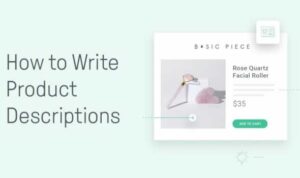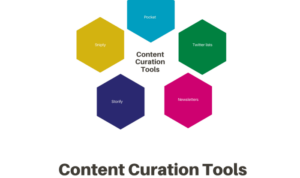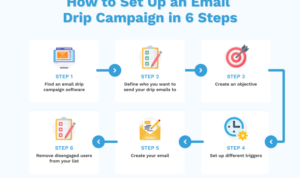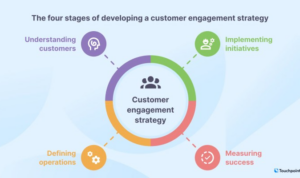Creating an Automated Email Sequence kicks off with a bang, offering a glimpse into the world of efficient communication strategies for businesses. From planning to execution, this guide has got you covered.
Whether you’re a seasoned marketer or a budding entrepreneur, mastering the art of automated email sequences can take your outreach to new heights.
Introduction to Automated Email Sequences
An automated email sequence is a series of pre-written emails that are sent out automatically based on triggers or schedules, without the need for manual intervention. These emails are personalized and tailored to the recipient’s actions or behavior.
Businesses can benefit greatly from using automated email sequences as they help in nurturing leads, engaging customers, and driving conversions. By sending targeted and timely messages, businesses can build relationships with their audience and increase brand loyalty.
Benefits of Automated Email Sequences for Businesses
- Increased efficiency: Saves time and resources by automating the email communication process.
- Personalization: Allows for personalized messages based on user behavior and preferences.
- Lead nurturing: Helps in guiding leads through the sales funnel with relevant content.
- Improved engagement: Keeps the audience engaged with timely and valuable information.
Examples of Industries Benefiting from Automated Email Sequences
- E-commerce: Sending abandoned cart emails, order confirmations, and product recommendations.
- Real Estate: Following up with potential buyers, sending property listings, and market updates.
- SaaS Companies: Onboarding new users, sharing product updates, and requesting feedback.
Planning Your Automated Email Sequence
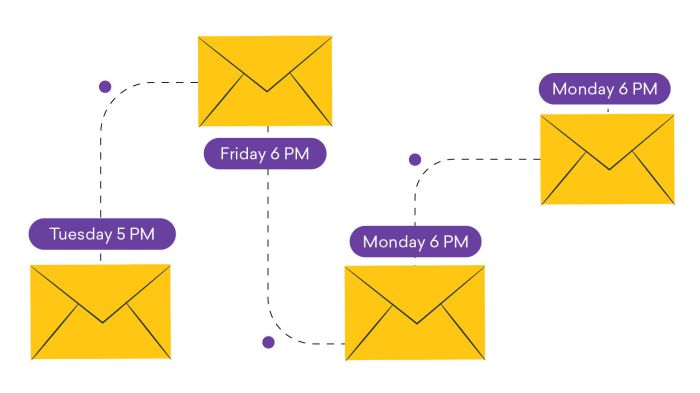
When planning your automated email sequence, it’s important to identify the goals you want to achieve. Whether it’s increasing sales, nurturing leads, or boosting engagement, having clear objectives will help guide your strategy.
Segmenting your email list is crucial for running more targeted campaigns. By dividing your subscribers based on demographics, behavior, or preferences, you can send personalized content that resonates with each group. This not only improves open and click-through rates but also builds stronger relationships with your audience.
Personalization is key in automated email sequences. By addressing subscribers by their name, sending relevant content based on their past interactions, and tailoring recommendations to their interests, you can create a more engaging experience. Personalized emails have higher conversion rates and lead to increased customer loyalty.
Creating Engaging Email Content
When it comes to creating engaging email content, there are a few key strategies to keep in mind. From writing compelling subject lines to incorporating visuals, here are some tips to help you craft emails that captivate your audience.
Tips for Writing Compelling Subject Lines
Subject lines are the first thing recipients see when they receive your email, so it’s crucial to make them attention-grabbing. Here are some tips to increase open rates:
- Keep it short and to the point
- Use action-oriented language
- Personalize when possible
- Create a sense of urgency
Different Types of Emails to Include in Your Sequence
There are several types of emails you can include in your automated sequence to keep your subscribers engaged. Here are a few examples:
- Welcome emails: Introduce new subscribers to your brand and set the tone for future interactions.
- Promotional emails: Highlight special offers, discounts, or new products/services to drive conversions.
- Follow-up emails: Check in with subscribers after a specific action or event to maintain engagement.
Strategies for Incorporating Visuals and Multimedia Elements
Visuals can significantly enhance the impact of your emails and make them more engaging. Here are some strategies to consider:
- Use high-quality images that are relevant to your content
- Include videos to showcase products or share valuable information
- Add GIFs or animations for a touch of creativity
- Optimize for mobile devices to ensure visuals load quickly and display correctly
Setting Up Automation Tools: Creating An Automated Email Sequence
Setting up automation tools is crucial for streamlining your email marketing efforts and ensuring that your audience receives timely and relevant messages. Let’s dive into the process of setting up triggers, workflows, and the importance of testing and optimizing your automated email sequence.
Compare Popular Email Marketing Platforms
- Mailchimp: Known for its user-friendly interface and customizable automation features, Mailchimp is a popular choice for businesses of all sizes.
- HubSpot: Offering advanced automation capabilities and robust CRM integration, HubSpot is ideal for companies looking to scale their email marketing efforts.
- ActiveCampaign: With powerful automation tools and a focus on customer segmentation, ActiveCampaign is perfect for creating personalized email sequences.
Setting Up Triggers and Workflows, Creating an Automated Email Sequence
- Identify your goals: Before setting up triggers and workflows, define the objectives of your automated email sequence to ensure they align with your overall marketing strategy.
- Segment your audience: Divide your subscribers into different segments based on their interests, behavior, or demographics to send targeted and relevant messages.
- Create triggers: Establish specific actions or events that will initiate the sending of automated emails, such as signing up for a newsletter or making a purchase.
- Build workflows: Design a series of emails that will be sent in response to triggers, ensuring a logical and engaging sequence for your subscribers.
Importance of Testing and Optimizing
- Split testing: Experiment with different subject lines, content, and sending times to determine what resonates best with your audience and drives higher engagement.
- Monitor performance: Track key metrics like open rates, click-through rates, and conversions to evaluate the effectiveness of your automated email sequence.
- Optimize for success: Use data-driven insights from testing to make informed decisions and continuously improve the performance of your automated emails.
Analyzing Performance and Iterating
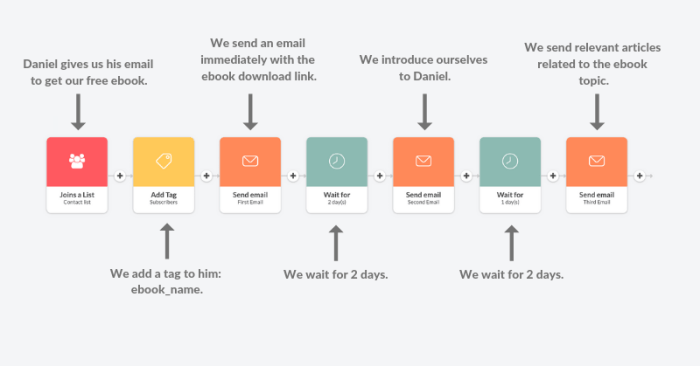
When it comes to analyzing the performance of your automated email sequence, there are several key metrics you should track to measure its success. These include open rates, click-through rates, conversion rates, unsubscribe rates, and overall engagement metrics. By monitoring these metrics, you can gain valuable insights into how well your email sequence is performing and identify areas for improvement.
Key Metrics to Track
- Open Rates: The percentage of recipients who open your emails. A high open rate indicates that your subject lines are engaging and enticing.
- Click-Through Rates: The percentage of recipients who click on links within your emails. This metric shows how effective your call-to-action is.
- Conversion Rates: The percentage of recipients who complete a desired action, such as making a purchase or signing up for a webinar. This metric measures the overall effectiveness of your email sequence.
- Unsubscribe Rates: The percentage of recipients who unsubscribe from your emails. A high unsubscribe rate may indicate that your content is not relevant or engaging.
- Overall Engagement Metrics: This includes metrics like forwards, shares, and replies, which can give you a more holistic view of how your audience is interacting with your emails.
Using A/B Testing
A/B testing is a powerful tool for improving email engagement. By testing different elements of your emails, such as subject lines, content, calls-to-action, and send times, you can identify what resonates best with your audience. To conduct an A/B test, create two versions of an email with one key difference between them, send them to equal segments of your audience, and analyze the results to see which version performs better. This iterative approach can help you continuously optimize your email sequence for maximum impact.
Best Practices for Iterating and Optimizing
- Regularly review performance metrics to identify trends and areas for improvement.
- Experiment with different content formats, tones, and messaging strategies to keep your emails fresh and engaging.
- Segment your audience based on behavior, demographics, or preferences to deliver more personalized and targeted content.
- Use feedback from subscribers to make informed decisions about how to refine your email sequence.
- Stay up-to-date on industry best practices and trends to ensure your email sequence remains relevant and effective.
